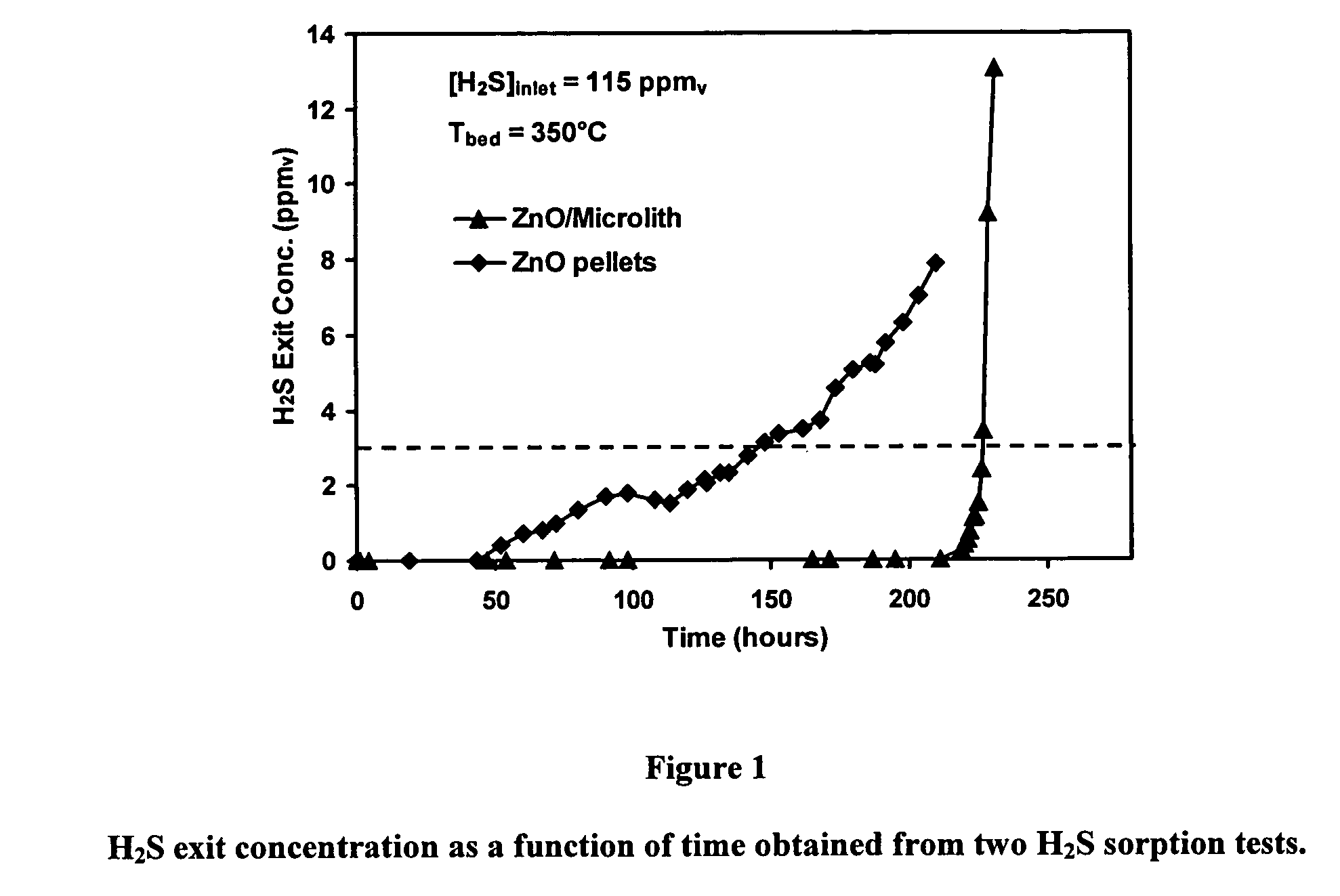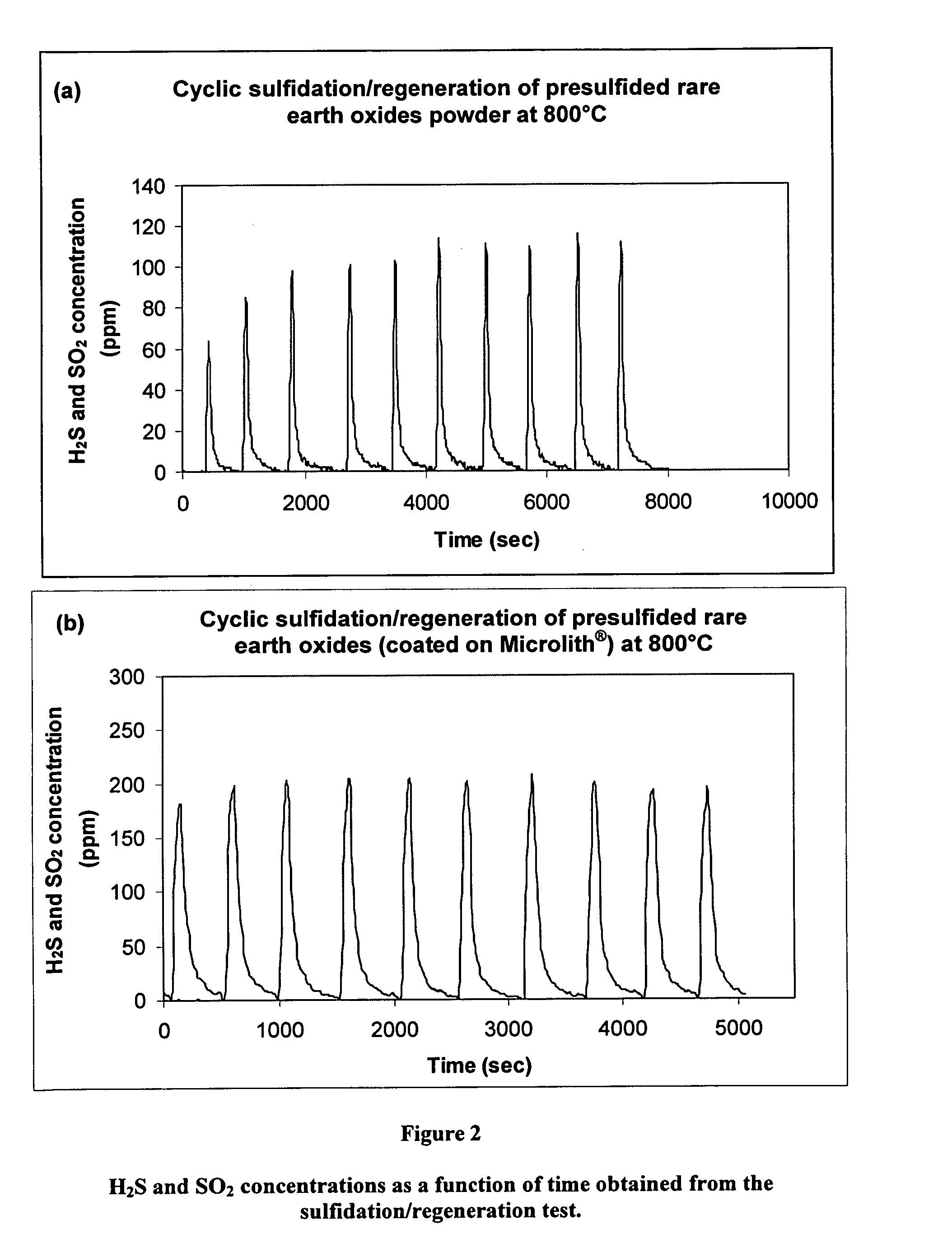Regenerative sulfur sorption
a sulfur sorption and sorbent technology, applied in the direction of sulfur compounds, hydrogen sulfides, separation processes, etc., can solve the problems of high pore volume and high crush strength, conflicting requirements, and limited loading capacity of 1050 mg of zno per insup>3
- Summary
- Abstract
- Description
- Claims
- Application Information
AI Technical Summary
Benefits of technology
Problems solved by technology
Method used
Image
Examples
Embodiment Construction
[0022]Conventional sulfur sorbents are usually based on pellets or extrudates. For example, zinc oxide (ZnO)-based pellet or extrudate is commonly used as H2S sorbent. The ZnO pellet performance strongly depends on pore and lattice diffusion, and is low at low temperature (<350° C.) due to the high activation energy of the lattice diffusion process. One way to improve the low temperature activity is to adjust the pore structure and the surface area of the pellet. On the other hand, sorbent regeneration requires the pellet / extrude be able to survive frequent adsorption / desorption cycles; thus, it requires high crush strength and low dusting. High pore volume and high crush strength are conflicting requirements. Therefore, sorbent design often has to balance these issues.
[0023]It has now been discovered that coating an ultra-short channel length mesh with a sulfur-sorbent formulation can produce a significant improvement in volumetric sorption capacity while also enabling lower sorben...
PUM
| Property | Measurement | Unit |
|---|---|---|
| channel diameter | aaaaa | aaaaa |
| temperature | aaaaa | aaaaa |
| size | aaaaa | aaaaa |
Abstract
Description
Claims
Application Information
 Login to View More
Login to View More - R&D
- Intellectual Property
- Life Sciences
- Materials
- Tech Scout
- Unparalleled Data Quality
- Higher Quality Content
- 60% Fewer Hallucinations
Browse by: Latest US Patents, China's latest patents, Technical Efficacy Thesaurus, Application Domain, Technology Topic, Popular Technical Reports.
© 2025 PatSnap. All rights reserved.Legal|Privacy policy|Modern Slavery Act Transparency Statement|Sitemap|About US| Contact US: help@patsnap.com


